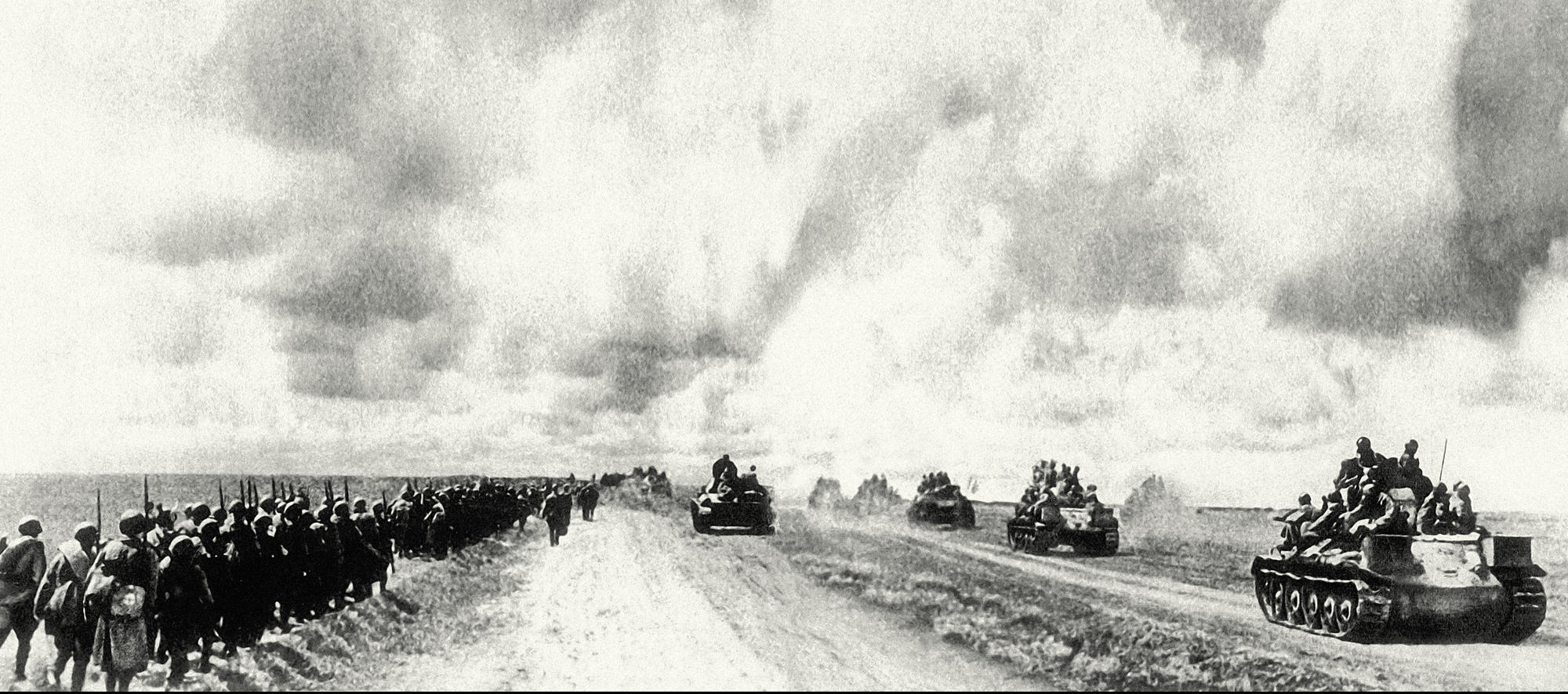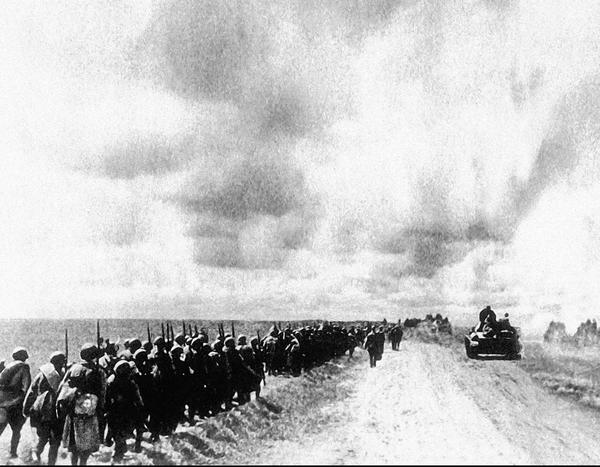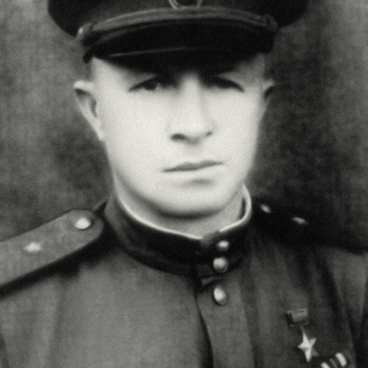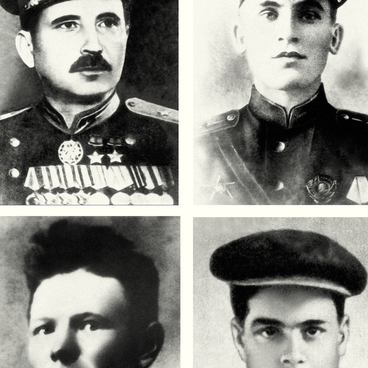Having sized up the situation at hand after the winter battling of 1942—1943, the Military Council at the Voronezh Front communicated the lessons learned to the General staff and the Supreme High Command General Headquarters. They jointly masterminded the 1943 summer warfare objective near Kursk.
On April 21, 1943, the Voronezh front Command was aware of the Germans’ plan to strike twice against the Kursk Salient base in June, cut our troops to pieces and retrieve the unfortunate defeat. The decision to checkmate the enemy was as follows: unsinew the enemy confronting him by a stiff resistance, and then defeat our way through the enemy.
The Voronezh Front was located southwards of the Kursk Salient. The Front Commander was full General Nikolay Fedorovich Vatutin, the Military Council Member and political commissar was Lieutenant General Nikita Sergeyevich Khrushchev and the Chief-of-Staff - Lieutenant General Semen Pavlovich Ivanov.
The German attack was expected in several directions at a time: from somewhere around Belgorod towards Korocha and Oboyan, and from somewhere around Volchansk towards Novy Oskol. The front extended by 114 km width way. The armored forces were getting ready to launch a counterattack, and an infantry corps took stand in the direction of Korocha where the forward defense line of the Front was running.
Preparations were being made for the battling, hewing to the adopted holding battle plan. The combat posture was being polished up in special training areas. There was a pressing need to work out to the last detail the plan to shut out enemy armor from the infantry advancing behind them. It would be easier to wipe them out in isolation from one another. The soldiers were working out hair-line cooperation of different counterattacking arms to the last detail.
The day before the Nazi attack, in the early hours of June 5, the Soviet artillery and air force launched a preemptive strike. Bombs and shells were dropped onto enemy armor and infantry, guns and mountings, command observation posts. Attacked were also the river crossing means stored for crossing the Severski Donets. A serious blow had been dealt to the German main attack force by artillery fire and airstrike even before the attack was commenced.
The German Command decided to delay the attack for two hours. Yet, in the face of significant loss, the operation commenced. The Southern Command staged a strike on Oboyan and Korocha.
On April 21, 1943, the Voronezh front Command was aware of the Germans’ plan to strike twice against the Kursk Salient base in June, cut our troops to pieces and retrieve the unfortunate defeat. The decision to checkmate the enemy was as follows: unsinew the enemy confronting him by a stiff resistance, and then defeat our way through the enemy.
The Voronezh Front was located southwards of the Kursk Salient. The Front Commander was full General Nikolay Fedorovich Vatutin, the Military Council Member and political commissar was Lieutenant General Nikita Sergeyevich Khrushchev and the Chief-of-Staff - Lieutenant General Semen Pavlovich Ivanov.
The German attack was expected in several directions at a time: from somewhere around Belgorod towards Korocha and Oboyan, and from somewhere around Volchansk towards Novy Oskol. The front extended by 114 km width way. The armored forces were getting ready to launch a counterattack, and an infantry corps took stand in the direction of Korocha where the forward defense line of the Front was running.
Preparations were being made for the battling, hewing to the adopted holding battle plan. The combat posture was being polished up in special training areas. There was a pressing need to work out to the last detail the plan to shut out enemy armor from the infantry advancing behind them. It would be easier to wipe them out in isolation from one another. The soldiers were working out hair-line cooperation of different counterattacking arms to the last detail.
The day before the Nazi attack, in the early hours of June 5, the Soviet artillery and air force launched a preemptive strike. Bombs and shells were dropped onto enemy armor and infantry, guns and mountings, command observation posts. Attacked were also the river crossing means stored for crossing the Severski Donets. A serious blow had been dealt to the German main attack force by artillery fire and airstrike even before the attack was commenced.
The German Command decided to delay the attack for two hours. Yet, in the face of significant loss, the operation commenced. The Southern Command staged a strike on Oboyan and Korocha.



